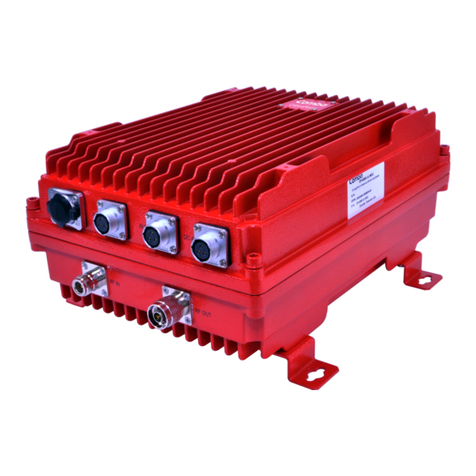
ANTENNA MONITORING SYSTEM (AMS) USER MANUAL
0.1 CONTENTS
Section Page
0.1 CONTENTS ....................................................................................................................................... 3
0.2 INDEX TO FIGURES AND TABLES ............................................................................................. 5
0.3 HISTORY ........................................................................................................................................... 6
0.4 GLOSSARY OF TERMS ................................................................................................................. 7
0.5 SAFETY NOTICES AND ADMONISHMENTS ............................................................................ 8
0.6 GENERAL INFORMATION .......................................................................................................... 9
1 EQUIPMENT DESCRIPTION ....................................................................................................... 10
1.1 EQUIPMENT BOCK DIAGRAM ................................................................................................... 10
1.2 EQUIPMENT LAYOUT .................................................................................................................. 11
1.3 EQUIPMENT CONSTITUTION .................................................................................................... 12
2 INSTALLATION .............................................................................................................................. 13
2.1 WARNINGS AND ALERTS ........................................................................................................... 13
2.2 SITE PLANNING CONSIDERATIONS ....................................................................................... 14
2.2.1 SITE PLANNING ............................................................................................................................ 14
2.2.2 INSTALLATION CHECKLIST ....................................................................................................... 15
2.3 INSTALLATION PROCEDURES ................................................................................................. 16
2.3.1 GOODS INWARDS INSPECTION .............................................................................................. 16
2.3.2 TOOLS ............................................................................................................................................. 16
2.3.3 PREPARATION .............................................................................................................................. 16
2.3.4 WALL MOUNTING ......................................................................................................................... 17
2.3.5 DRIP-LOOP ..................................................................................................................................... 17
2.4 EQUIPMENT CONNECTORS...................................................................................................... 18
2.4.1 AMS CONNECTORS ..................................................................................................................... 18
2.4.2 GROUNDING CONNECTION ...................................................................................................... 19
2.4.3 -48VDC POWER CABLE CONNECTION .................................................................................. 19
2.4.4 RF CABLE CONNECTION ........................................................................................................... 19
2.4.5 ETHERNET CONNECTION ......................................................................................................... 19
2.4.6 DRY CONTACT CABLE CONNECTION .................................................................................... 20
2.4.7 DRY CONTACT ALARMS ............................................................................................................ 21
3 AMS OMT GUI OVERVIEW ......................................................................................................... 22
3.1 AMS OMT GUI CONNECTION .................................................................................................... 22
3.2 OMT GUI INTRODUCTION .......................................................................................................... 23
3.2.1 [CURRENT ALARM] ...................................................................................................................... 24
3.2.2 [TAG MANAGER] ........................................................................................................................... 25
3.2.3 [STATUS] ......................................................................................................................................... 26
3.2.4 [ALARM LOG] ................................................................................................................................. 27
3.2.5 [TAG SCAN] .................................................................................................................................... 28
4 COMMISSIONING ......................................................................................................................... 29
4.1 PRE-COMMISSIONING TASKS .................................................................................................. 29
4.2 PRE-COMMISSIONING PROCEDURE ..................................................................................... 29
4.3 COMMISSIONING THE AMS EQUIPMENT .............................................................................. 30
4.4 TROUBLESHOOTING TIPS ......................................................................................................... 33




























